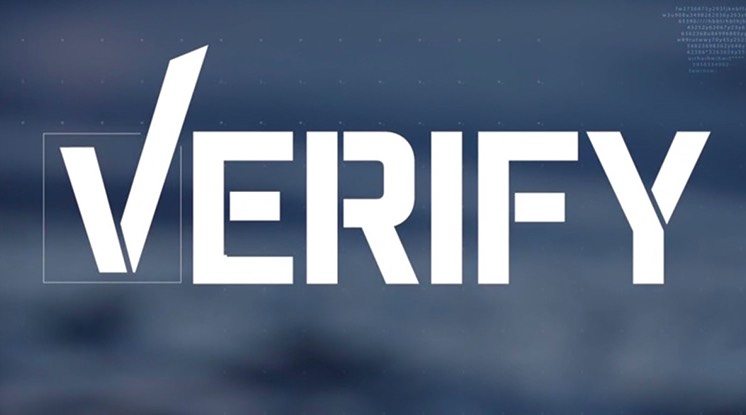With New Initiative Tegna Stations Manage to Verify, Then Trust

While much of the brouhaha surrounding “fake news” has surrounded topics such as Russian meddling and CNN, there are plenty of other stories where consumers want the real lowdown.
Take, for instance, that picture of the giant bullfrog making the rounds on Facebook. Was it real? (The camera angle tells the whole story.) Is sharing your Netflix password illegal? (In theory, could be. In practice, don’t worry.) And are those lines we see behind airplanes really benign, or is there validity to the theory that the government is showering us with chemicals? (An FAA rep had a good laugh at that one.)
We have all the parenthetical answers because, since May 1, journalists at Tegna’s TV stations in 38 markets have been delving into the real story behind the breadth of topics — from curiosities such as those above, to weightier local and national issues — as part of its new fact-checking initiative, Verify.
Under the initiative, consumers submit stories for verification; depending on the story, and based on factors from its importance to whether there’s big interest in it, journalists with training from top investigative reporters and editors go to task finding out what is, or isn’t, true. They then document the word either way in their fact-finding process, said Ellen Crooke, Tegna’s VP of news.
Many stories reap full-blown news reports. An investigation by WJXX, the ABC affiliate in Jacksonville, Fla., into a photo of an infant born holding an IUD (the photo was debunked) led to a medical story about the effectiveness of the contraceptive. In Houston, CBS affiliate KHOU, which gets roughly 50 Verify requests per week, tries to have at least one Verify story in each of its newscasts, covering topics from Houston zoning laws to whether it’s legal to drive barefoot, said news director Sally Ramirez, who ran the pilot Verify program.
True Viewer Response
While the idea is not entirely new — PolitiFact, for instance, has been fact-checking political stories for a decade — viewers are responding. By June 13, Verify had drawn 4.4 million visitors, and 5.8 million page views across the group, Crooke said. Videos were played 665,000 times.
Broadcasting & Cable Newsletter
The smarter way to stay on top of broadcasting and cable industry. Sign up below
“This is journalism,” said Ramirez. Even though not all topics are of great depth, stories are selected because they are, in fact, the ones that are top-of-mind for consumers, she said. “When you see the number of times these things get shared, or people asking the same question, it’s worth setting the record straight.”
Another key component is walking consumers through the verification process by not only clearly stating information, but adding how, and from where, it was obtained, she said.
But Al Tompkins, the Poynter Institute’s senior faculty for broadcasting and online, said journalists have to resist temptation to “chase popularity rather than importance,” especially at a time of multiple demands on reporters.
“The time you spend trying to track down whether some social-media nonsense is true is time that you are not spending doing something important,” he said. “We shouldn’t kid ourselves into thinking we could do both. It’s either-or.”
Tompkins said that for TV stations, it’s all about defining goals. “Are we trying to create traffic or are we actually trying to solve questions that people need and want to know?” he said, adding that reporters should be “solving the viewers’ problems, not just fulfilling their curiosity.”
Crooke, however, said Verify’s success speaks for itself, reflecting both what consumers want from local TV journalists and how fostering their trust pays off in everything from audience share to community building.
“This is 360-degree communication with our audience,” Crooke said.
She said the process behind Verify — from pursuing stories that come from viewers, and being transparent with the fact-checking process — is, in some ways, as important as the stories themselves.
“We know that trust in journalists is not at a very high place right now,” she said, adding this is as much about fostering trust. “We understand that our role as local journalists has changed.”
